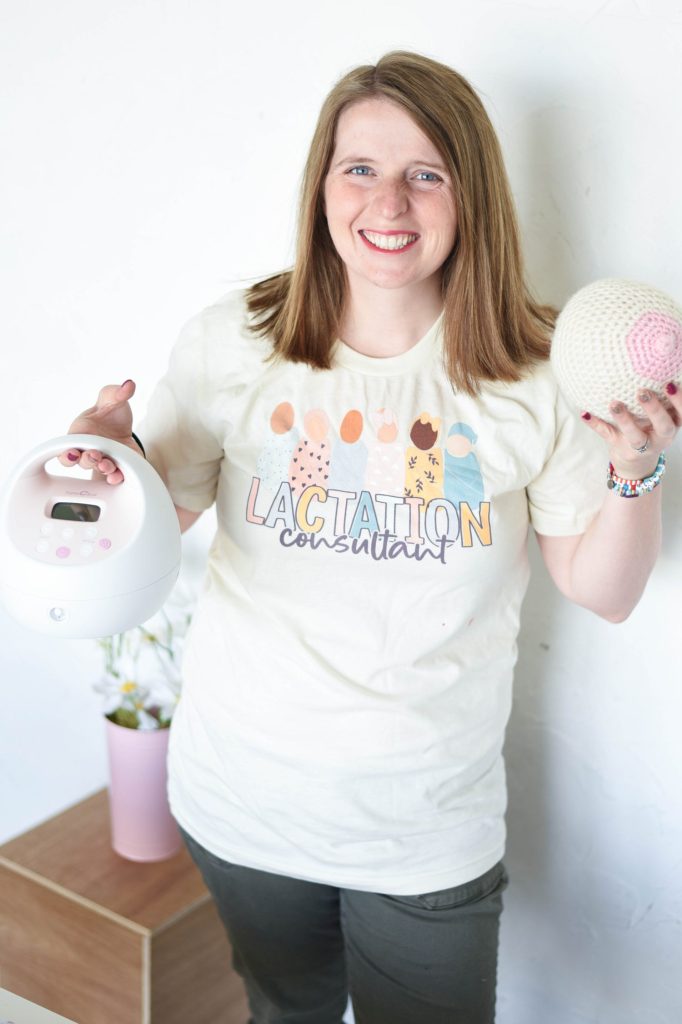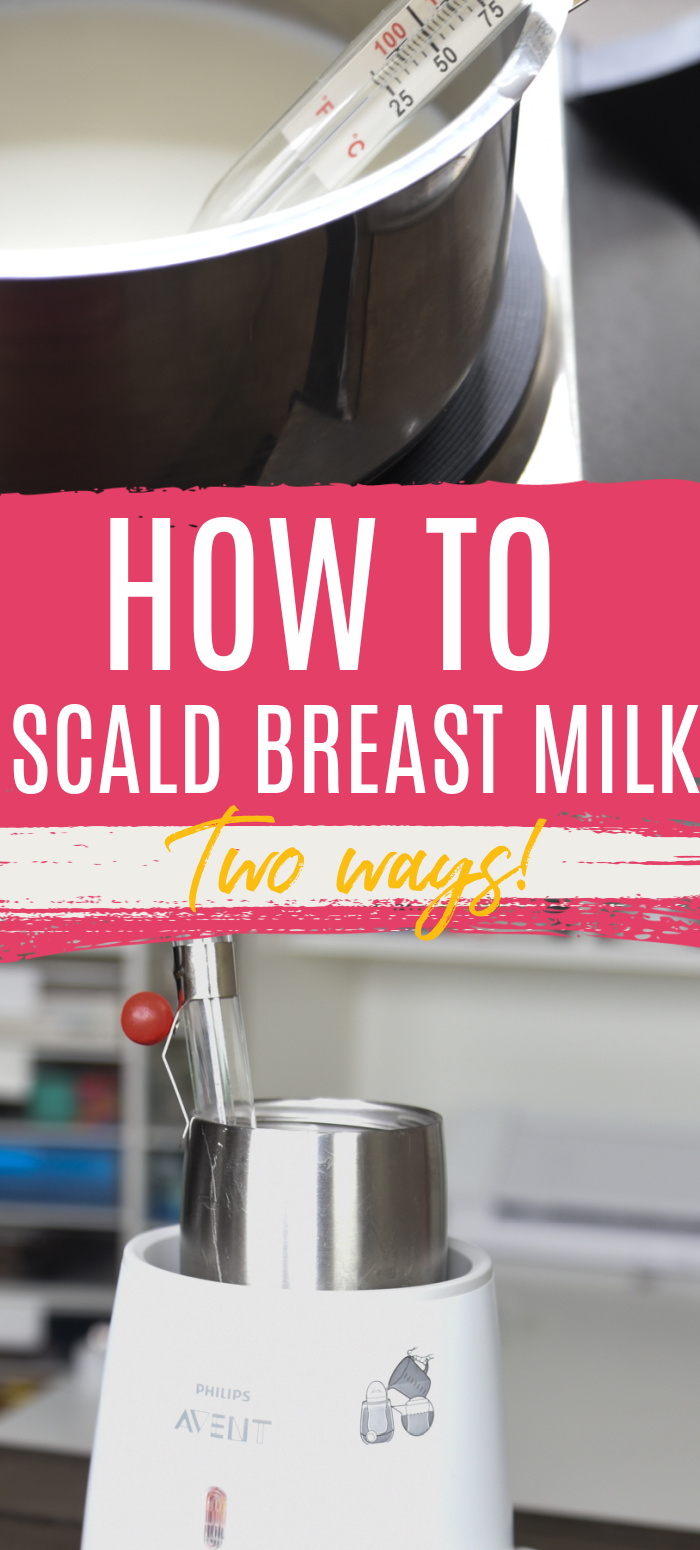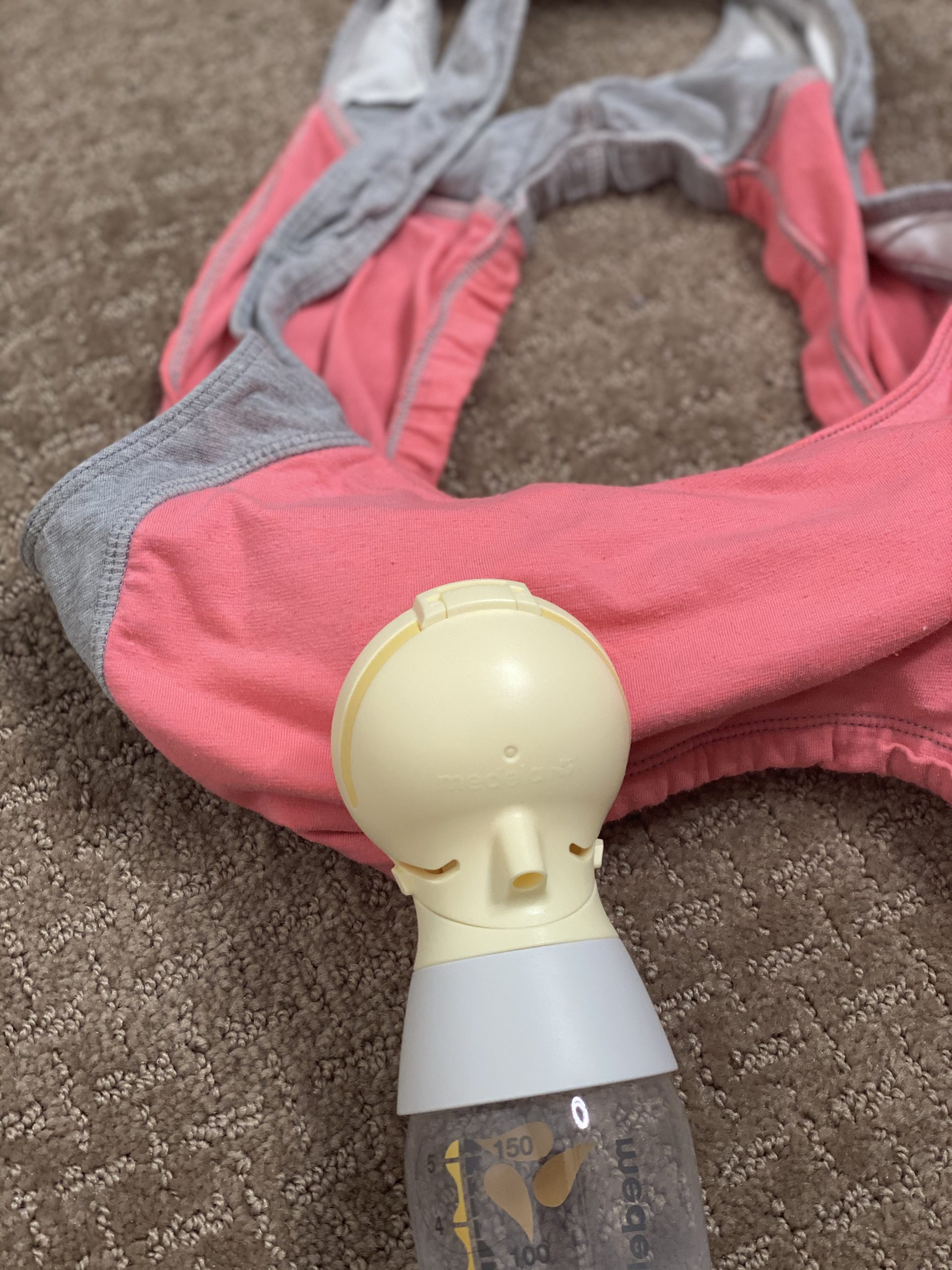Through my experience as a mom and private practice IBCLC, latching is one of the biggest culprits behind breastfeeding problems. Attaining a proper breastfeeding latch is crucial for success.
Here proper latch for breastfeeding diagram and what a baby who is latched appropriately will look like:

But let’s break it down a little further and show you how to use your baby’s reflexes to help them latch.
How to Get a Proper Latch for Breastfeeding
Engage the Rooting Reflex
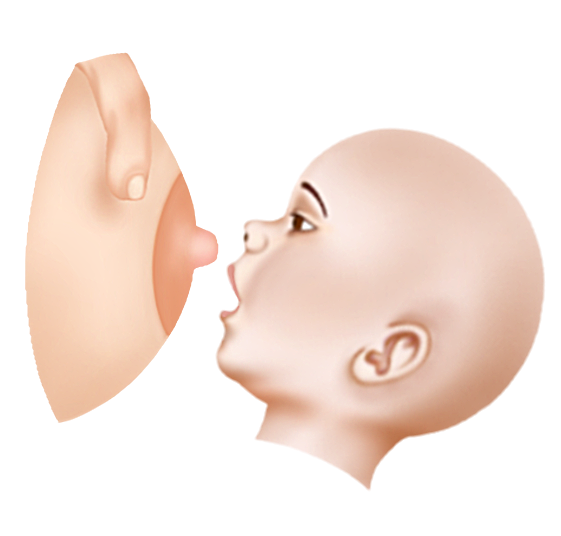
The first step is to have your baby root toward the breast. Honestly, this often happens on its own when your baby is close to your breast and the milk buffet, but if not, you can engage this reflex by stroking their cheek with your breast to encourage them to turn toward the breast. This will often result in your baby opening their mouth – but wait, don’t let them latch yet! The mouth isn’t open quite wide enough yet.
Plant the Chin
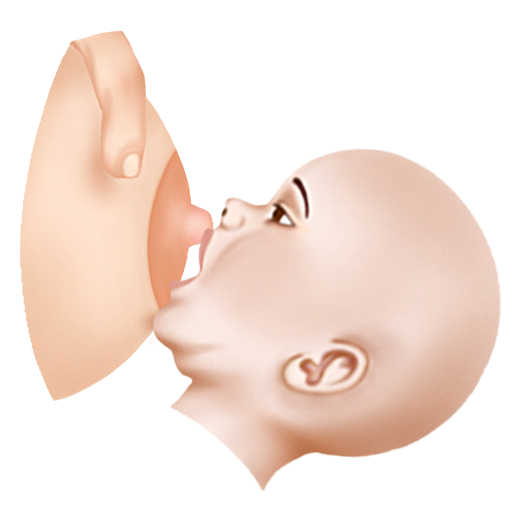
You might have heard that you need to line your baby’s nose up with your nipple – but I don’t usually love this approach. This can sometimes get baby to start sucking and latch too early, resulting in a shallow latch.
Instead, you want to have the baby’s chin planted firmly into the breast, about an inch or so below the nipple. This will encourage the gaping reflex to be activated. We really want your baby to have a very wide open mouth (about 120 degrees).
Stimulate the Suck
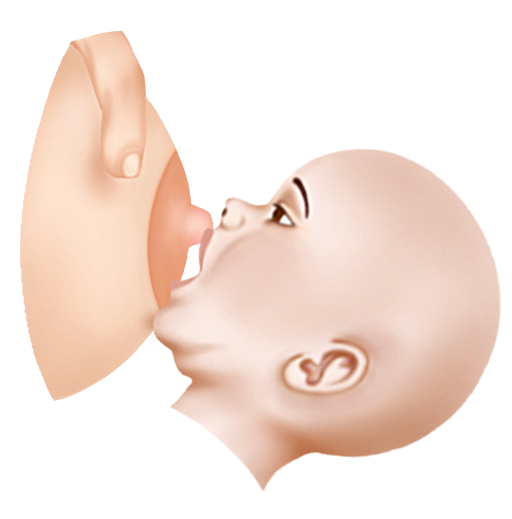
Now at this point, your baby might start to self-attach – and that’s great! But if not, you can stimulate their sucking reflex by stroking your nipple from the nose, across their upper lip, and finally landing on their tongue. This should encourage them to cup their tongue and start sucking.
If your baby struggles to get on to the breast, you can shape the breast to help them.
Nurse your baby
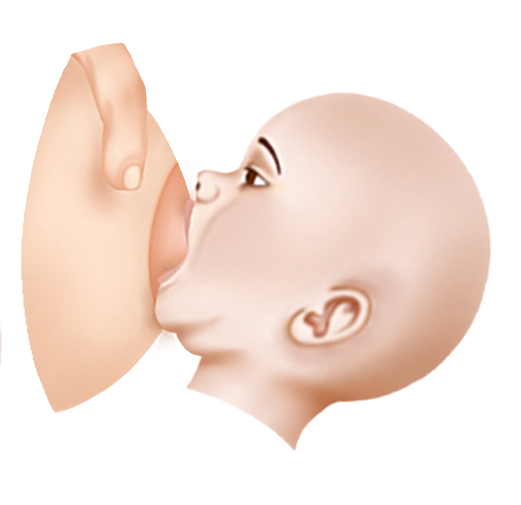
This is a proper breastfeeding latch picture. Now that your baby is properly latched, they should be able to nurse effectively. I’ll share more tips below for what this should look like, but in general, baby should have their lower lip flanged out and upper lip flanged or neutral, there should be full cheeks (not sucked in), and you should hear sucking and swallowing.
I’d love to see you in my Fuss-Free First Year online breastfeeding program. This unique resource gives you dozens of breastfeeding-related videos, a supportive community, live support sessions, and much more. It’s an amazing resource for every stage of breastfeeding!
Positioning and Latching
A good latch starts with good positioning. While there are a variety of ways you can comfortably nurse, I usually recommend starting with a leaned-back, cross-cradle position. The koala position can be great as well.
Now that I’ve shared the close-up of latching above, here is some guidance on positioning and how this might look.

Get in a comfortable chair that you can lean back in and bring your baby tummy to tummy with you.
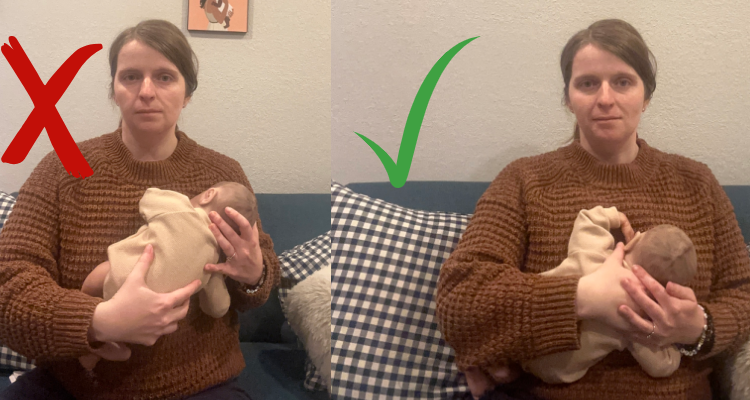
Angle the baby’s body downward and below the breast, so they have to reach up toward the breast to latch. I often see babies too high on the breast, which can make it difficult to latch them. You can also see that baby’s neck and hips are in line.

Tickle the baby’s cheek with your nipple to get him or her to root toward the breast (sorry, I had trouble getting a very good picture of this!)
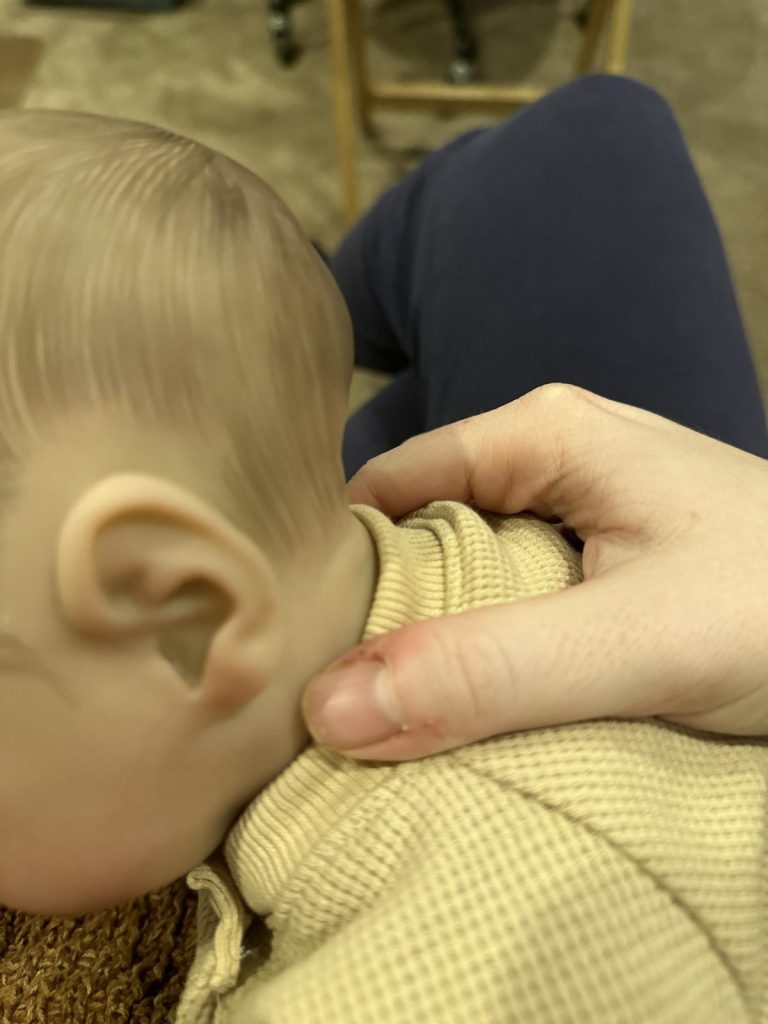
Cradle your baby’s neck gently with your fingers and help them to plant their chin firmly into the breast, about an inch or so below the nipple.

After the baby opens his or her mouth nice and wide, use your nipple to stroke from their nose, across their upper lip, and then end on their tongue.
Most babies will self-attach at this point, but you can also help to shape the breast and guide it into their mouth.
It may take your baby a few tries to get it right, but you’ll get there!
If you are struggling to latch your baby no matter what you try, be sure to consider booking a virtual lactation consult with a member of The Breastfeeding Mama team! We are in-network with several insurances and provide competitive self-pay prices (our consults are covered by HSA/FSA funds as well!).
Tips for Getting a Better Latch
- Make sure to tuck their little bum into your arm to keep them extra secure.
- A proper latch is when a baby is securely attached to the breast with a wide, open gape – wait until the mouth is wide before attempting to latch
- If your baby struggles to open their mouth wide, they might be dealing with tension in their body or face, or they may have some underlying oral function issues. I would recommend working with an IBCLC to overcome these issues.
- You can practice the gaping reflex by tapping on baby’s nose, upper lip, and then chin, applying gentle pressure to push it down.
- Leaning back helps 99% of the mom’s I work with
- Ditch the nursing pillow – this usually gets baby far too high and horizontal at the breast.
What to Look for in a Deep Latch
Generally, when assessing a latch, I look for:
- A baby’s lips should be flanged out and mouth should be open to approximately a 140-degree angle (this is WIDE!)
- Baby should have his or her mouth around the nipple and areola
- When suckling, baby’s cheeks should not be sucking in
- Baby should be reaching up toward the breast rather than
- We shouldn’t hear a “clicking” sound, or too much gulping. There should be a rhythmic “suck, suck, swallow” pattern as soon as the mother gets a letdown
- Mom should feel comfortable during the nursing sessions and after
- Mom’s nipples should look the same as they did before nursing; if there is any flattening or discoloration
Phew, that was a lot! But I hope that this guide will help you get a better latch. Be sure to reach out for help if you need it.

